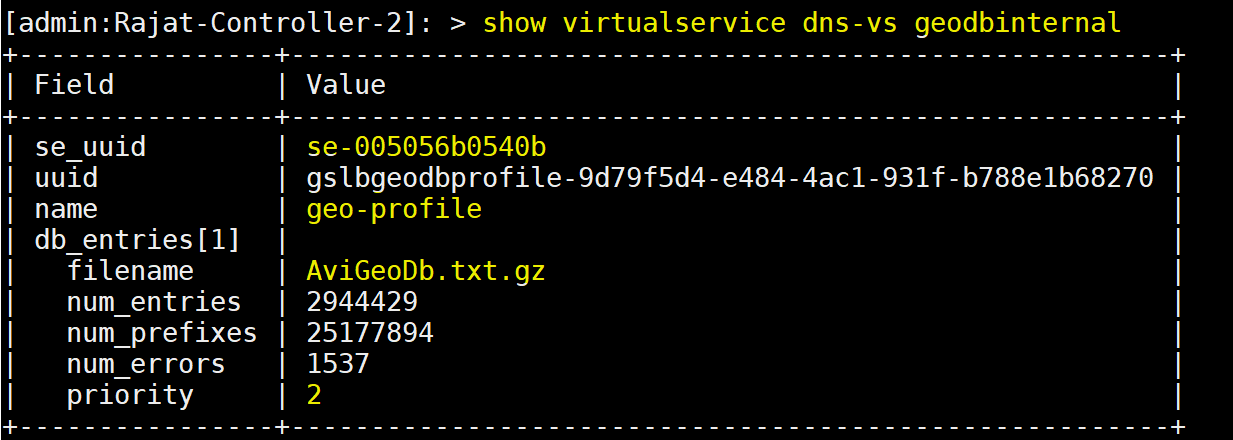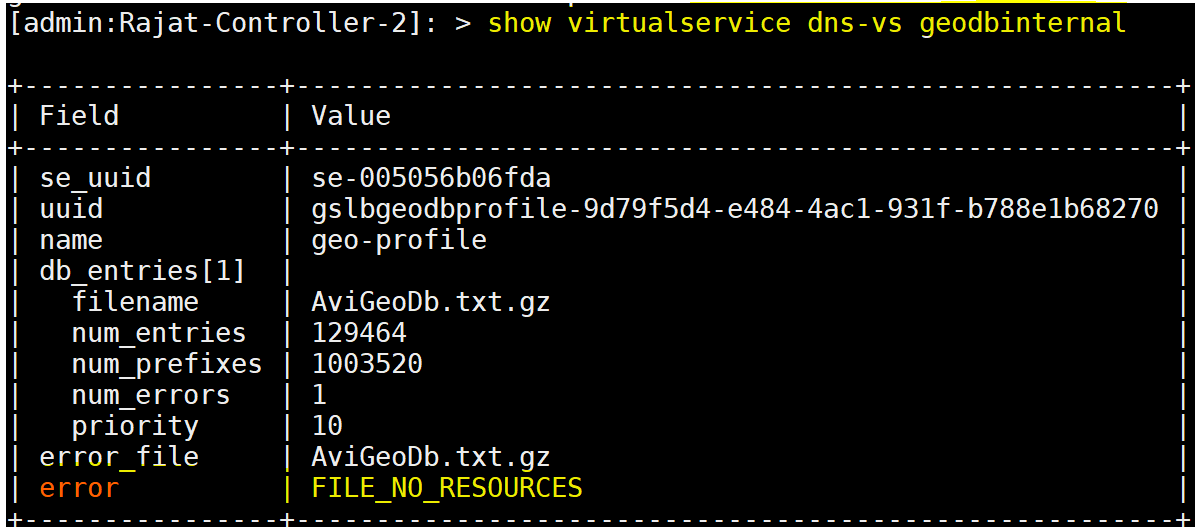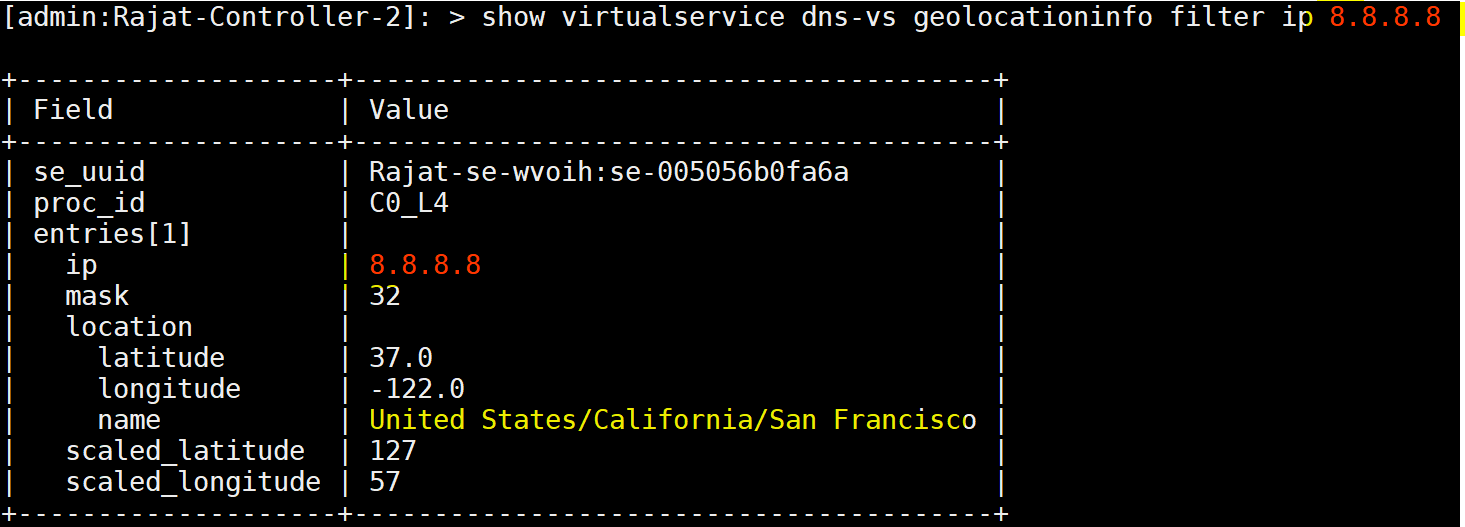Troubleshooting GeoDB Issues
This article includes methods to confirm proper operation of and fix issues within the Avi GSLB GeoDB.
Checklist
- Prior to investigating a suspected GeoDB issue, verify that all GSLB sites, GSLB services and the DNS VS are configured and running.
- Ensure the SE group of the DNS VS is configured with sufficient disk and memory. Below appear the minimum recommended values.

- Once a geo profile has been defined, confirm it has been pushed to the Service Engine. Use the
show virtualservice your-dns-vs-name geodbinternalcommand to verify the GeoDB has been applied correctly. Look for results such as below:

You may otherwise observe error output as below.FILE_NO_RESOURCESmeans there is not enough space on the SEs, as discussed above.

- Verify that a geolocation algorithm is in play where it ought to be. In contemporary releases of Avi Vantage, that could be at the GSLB service level and/or the GSLB pool level. The below Avi UI screenshot shows the geo algorithm is indeed running at the GSLB pool level.

- Verify the geolocation algorithm is able to detect the location of an IP address. To do this, use the following command:
show virtualservice dns-vs-name geolocationinfo [filter ip|start_ip]
The following output confirms a location in California:

The following output confirms a location in India:

Absence of an entry in the below output means either the GeoDB lacks information for the106.1.2.3subnet or SE resources are insufficient for the GeoDB to function.

Additional Commands to Facilitate Troubleshooting
show gslbservice gslb-svc runtimeshow virtualservice dns-vs-name dnstable— Showsdnstablebound to the DNS virtual serviceshow virtualservice dns-vs-name gslbservicedetail filter gs_ref gslb-svc-name— Shows if a GSLB service is on all SEs and the state of that serviceshow virtualservice dns-vs-name
gslbservicedetail
gslbservicehmonstat
gslbserviceinternal
gslbsiteinternal
The first three of the above options need to be qualified using a filter, as illustrated by the following command:
show virtualservice dns-vs-name gslbservicehmonstat filter gs_ref gslb-svc-name
Thegslbservicedetailandgslbserviceinternaloptions also display location information for the GSLB pool member.
Logs to Collect
Especially when seeking help from Avi Networks Support, please collect these logs:
- Within the
/var/log/upstartdirectory:glb_mgr.logand*portal*.log - Within the
/opt/avi/logdirectory:glb_mgr.logand*portal*.log - On the SE where the DNS virtual service is running, collect
se_trace.info.
